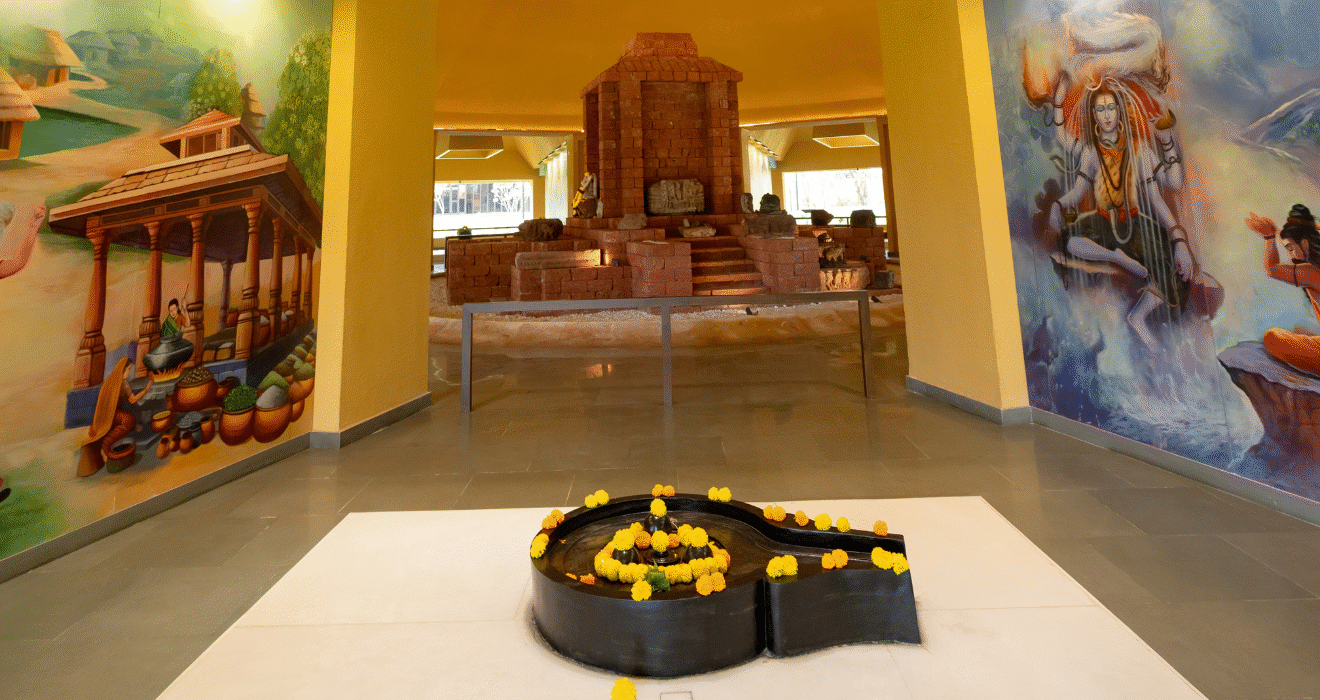
Nestled in the serene hills near Nashik, the Trimbakeshwar Temple stands as a profound symbol of the divine trinity. As one of the twelve Jyotirlingas dedicated to Lord Shiva, this sacred site holds special significance for its unique three-faced linga, representing Brahma, Vishnu, and Shiva.
Shri Trimbakeshwar Temple, located near Nashik in Maharashtra, is one of the twelve sacred Jyotirlingas of Lord Shiva. What sets this temple apart is its linga with three faces, symbolizing the divine trinity—Brahma, Vishnu, and Shiva. Over time, the linga has eroded, not by nature but due to excessive ritualistic bathing with water, a silent yet powerful symbol of the erosion of human values and society.
The Crown of Tridev
To preserve and honor the sacredness of the linga, it is kept covered with a jeweled crown, placed over a golden mask representing the Tridev. This crown is embedded with diamonds, emeralds, and other precious stones, and is displayed to devotees on specific occasions, adding to the temple’s spiritual allure.
Unfolding the Vision: Installation in Progress

The Tale of Gautama Rishi and the Birth of Godavari
The origin of this holy site is tied to Gautama Rishi, who lived on the Brahmagiri Hills with his wife, Ahalya. During a prolonged famine, Gautama’s ashram remained blessed with abundant food grains due to his unwavering devotion and selfless prayers. Jealous of his prosperity, other sages conspired and sent a divine cow into his field. When Gautama tried to chase it away, the cow died, and he was cursed with the sin of gau hatya (cow slaughter).
To absolve his sin, Gautama prayed earnestly to Lord Shiva, requesting the release of Ganga to sanctify the land. Pleased with his devotion, Shiva manifested River Ganga, who began flowing from the Kushavarta Kund, now considered the origin of the Godavari River, worshipped here as Ganga herself.


Shiva’s Eternal Presence at Trimbakeshwar
As a final blessing, Gautama Rishi pleaded with Lord Shiva to make Trimbakeshwar his eternal abode. Lord Shiva granted the wish, manifesting as a Jyotirlinga at this sacred spot. The temple thus stands not only as a place of worship but also as the origin of the holy Godavari River, carrying both divine energy and rich mythology.
